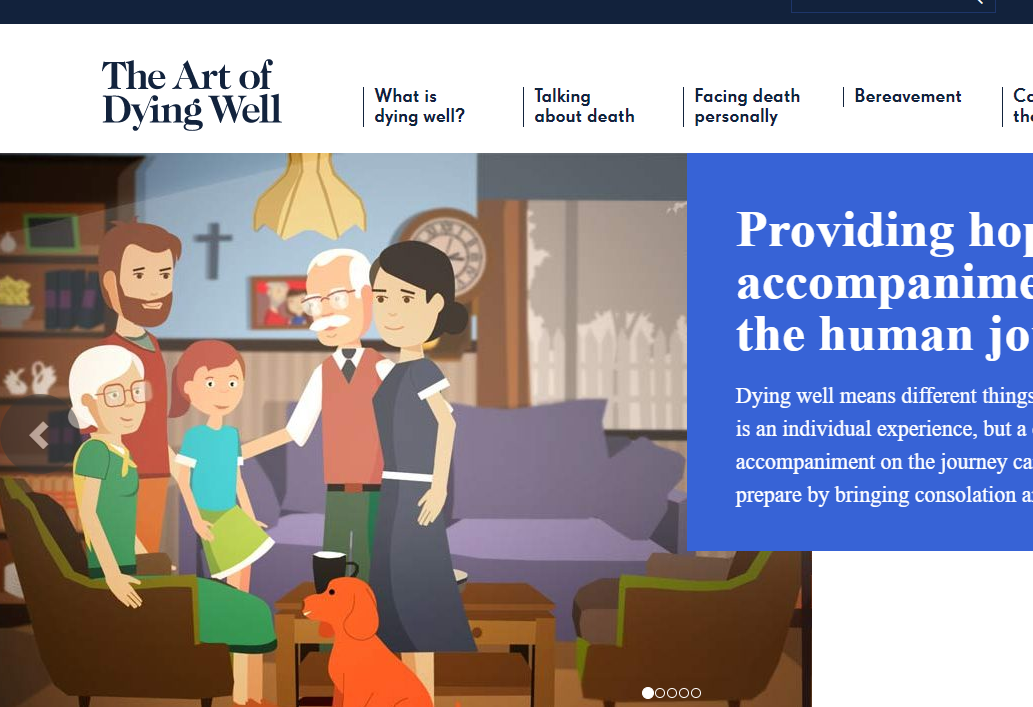
The final goodbye to a loved one has been transformed in the wake of the coronavirus. Due to the infectious nature of COVID-19, being physically present at the bedside of someone you love as they are dying is either not possible, or different from how it was before the pandemic.
Dr Amy Gadoud, working on the frontline as a consultant at Trinity Hospice and Blackpool Teaching Hospitals, says: “I think that's the bombshell that we've all been hit by in this coronavirus crisis. If people are dying of some other disease at this time, it's possible that one relative may be allowed into the hospital or care home. It's possible. It's also possible you may not.”
At St Oswald’s hospice, Newcastle, where Dr Jo Elverson works, and in many other places of care, you are allowed to have a visitor even if you are dying of COVID-19, although they will be asked to wear personal protective equipment. She says that “for many of our patients the difficulty is that visitors may be unable to come in because they live in another part of the country, have to stay at home because they themselves have COVID-19 symptoms, or may be in a vulnerable group where they have been advised that the risk is too great.”
“Guidance and public messaging about visiting is changing all the time,” she adds and “I also think everywhere is interpreting the guidance differently across the country.”
In light of these challenges, the Centre for The Art of Dying Well at St Mary’s University has developed a new Deathbed Etiquette for COVID-19. It has been written to help families and friends feel close to a loved one, even if they are apart or together in a different way. It draws on the experiences of palliative care consultants and hospital chaplains.
“Healthcare professionals are never going to desert the dying,” says Dr Amy Gadoud. She says that contact will always be there, but it might be a little different.
Dr Jo Elverson says that when visitors are allowed “they may be asked to stay for a shorter time or to wear protective clothes and a mask, or even to keep their distance when they're in the room.”
And for those who cannot be physically present, the team at St Oswald’s hospice are trying to “make sure people have access to phones or tablets where they can actually see their loved ones.”
Dr Elverson encourages relatives to talk to staff and to find out the best way to keep in touch and to send in messages. “You can always write a message, send a text, send an email or something, or ask the staff to pass on messages of love. I know that certainly everyone that I've spoken to, would be more than happy to be that messenger, and to try and convey that care and that love, that you want to pass on to your loved one.”
When touch is not possible, eye contact is extremely important. Although for some cultures this may be different. Dr Jo Elverson says, “I think there’s something about the eye contact, there's something about just being physically present. We quite often say to people just keep talking, even if their loved one is asleep or doesn't seem to be strong enough to listen to them, actually having the sound of their voice in the background is really helpful.”
If someone is dying at home, touch may be possible in a different way, “with the sort of safeguards of good hygiene and using appropriate equipment,” says Dr Gadoud.
During this difficult time she adds “there is no rule, there's no right or wrong way of doing things.” It’s best to be “guided by the relationship that you've always had with (your loved one) and to do things that you always would.”
Retired hospital and hospice chaplain Dr Lynn Bassett says that the Deathbed Etiquette for COVID-19 can be summed up by “three quite simple things; the dying person, yourself, and then looking out towards friends and family.”
Deathbed Etiquette for COVID-19:
- Do what you can to help you feel close to your loved one even if you are apart.
- Think about what your loved one would think and say. They will not want you to worry.
- Communicating virtually may be an option.
- What can I say? Speak from the heart.
- Trust in the good care of the doctors and nurses. They are there for your loved one and for you.
- Take care of yourself. It is important that you keep well.
- Draw on your inner strength. Do what is helpful to you.
- Don’t let feelings of guilt take over. Accept your feelings and let them pass. Think of the good advice you might give to someone else and then take it yourself.
- Keep up with family, friends and those who will lift your spirits.
The Art of Dying Well at St Mary’s University is a Centre for public engagement, policy and research. artofdyingwell.org
